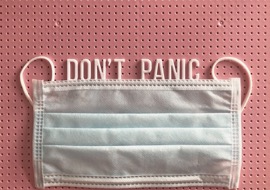Fear of Dentists or Doctors
09/18/24 Filed in: Instruction
Overcoming fears - like fear of going to the dentist or doctor - can be accomplished by implementing a systematic desensitization approach. It starts by talking to the individual about their fear and then developing a fear hierarchy. Gradually expose the individual to the least anxiety provoking step all the while maintaining a very positive environment. Make sure to celebrate small victories.
What follows is some valuable information and steps to help individuals with developmental disabilities who have a fear of doctors and dentists. It's crucial to provide a supportive and gradual approach to reduce anxiety and create a positive experience for them. One effective technique for achieving this is systematic desensitization.
What is Systematic Desensitization? Systematic desensitization is an approach aimed at reducing an individual's fear or anxiety towards specific situations or stimuli. It involves breaking down the feared situation into smaller, manageable steps and gradually exposing the person to these steps, helping them become more comfortable over time.
Steps for Implementing Systematic Desensitization:
1. Understanding the Fear:
- Start by talking to the individual about their fear. Listen to their concerns and ask them what specifically scares them about doctors or dentists. Understanding the root of their fear is essential.
- Develop a fear hierarchy or list of steps leading up to the actual doctor or dentist appointment. Arrange these steps from least to most anxiety-inducing. For example:
- Looking at pictures of the clinic online
- Watching videos of a doctor's visit
- Sitting in a car outside the clinic and watching people enter and leave
- Visiting the clinic without an appointment and just say hello to the receptionist.
- Sitting in the waiting room
- Participating in a pretend doctor's checkup
3. Set Achievable Goals:
Work with the individual to set achievable goals for each step of the hierarchy. Goals should be realistic and adapted to their pace, gradually increasing their comfort level.
4. Teach Relaxation Skills:
Use relaxation techniques at each stage, such as deep breathing or visualization, to help manage anxiety.
5. Use Gradual Exposure:
Begin with the least anxiety-inducing step and practice it until the individual feels comfortable. Encourage them to express their feelings and provide positive reinforcement.
Move on to the next step in the hierarchy only when they are ready. This process may take days, weeks, or even months, depending on their progress.
6. Maintain a Positive Environment:
Ensure that the doctor or dentist is aware of the individual's needs and fears. Encourage a calm and patient approach from healthcare providers.
Use positive reinforcement, such as encouragement, praise and reward, for each successful step completed.
7. Celebrate Achievements:
Celebrate small victories. When the individual accomplishes a step in the hierarchy, acknowledge their achievement and build their confidence.
8. Repeat and Review:
Continue practicing each step in the hierarchy regularly, reinforcing the progress made and addressing any setbacks or new concerns that may arise.
9. Patience and Persistence:
Remember that systematic desensitization is a gradual process. Be patient and adaptable, adjusting the plan as needed to cater to the individual's unique needs and progress.
By following these steps, you can help individuals with developmental disabilities overcome their fear of doctors and dentists in a supportive and effective manner. Systematic desensitization promotes a positive experience and enhances their overall well-being.
blog comments powered by Disqus


